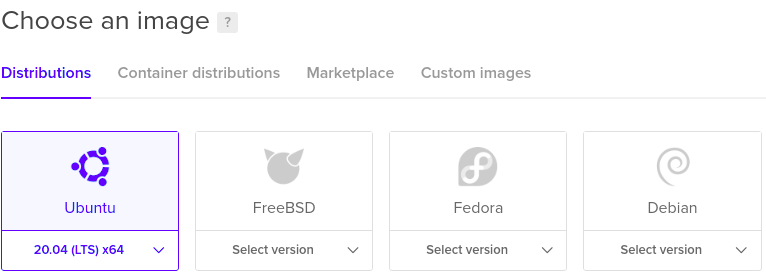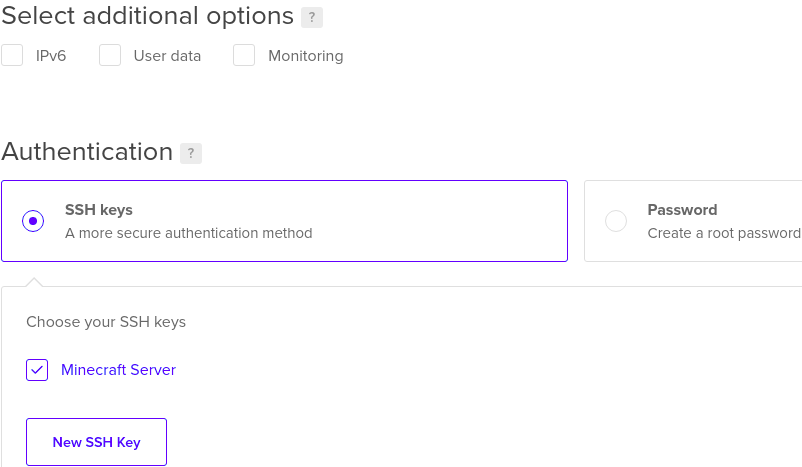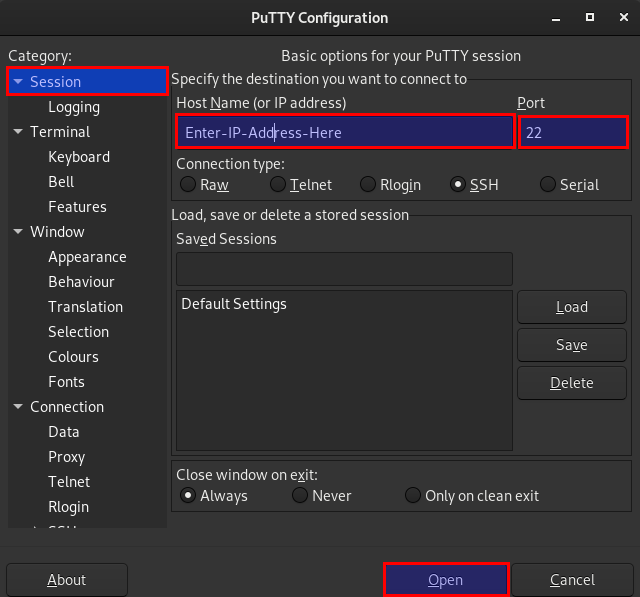If you wish to develop a Discord bot, you can easily do so using Discord.js. Personally, I always felt worried about my privacy when using third-party Discord bots. What if some of them could be tracking my messages? Due to that worry, I developed my own Discord bot and hosted it on a VPS. Virtual Private Servers are reliable since they are affordable and ensure your bot is online 24/7.
Download the Simple Discord Music Bot
In this post, we will not dive into developing Discord bots. Instead, we will use a freely available Discord bot on GitHub – Simple Discord Music bot. As the name suggests, it’s a very simple discord music bot with the discordjs.guide command handler for easy learning and adapting. Other features include:
Queue systemVolume controlPause/Resume
Setup a VPS Server on Digital Ocean
Writing this post, Digital Ocean offers free $100 credit for 60 days when you first sign up. All you need to do is verify an account for $5 using PayPal or a credit card. That’s a good offer to get you started—two full months of free hosting. Sign up for an account and log in to the Control Panel. Click on the Create button(green) on the top-right to open a dropdown menu. Select Droplets to create a cloud server. You will see an option to select the distribution you want to use. Select Ubuntu. As of writing this post, the available stable Ubuntu release is Ubuntu 2.04 LTS. However, if you are well versed with Linux systems, don’t be limited. Feel free to explore other distros like Debian, Fedora, CentOS, and more. After selecting your distribution of choice, you will need to select a plan. That is basically the hardware architecture for your VPS. For this particular tutorial, I will select the Basic plan for $10/month. That comes with 2GB RAM, 50GB SSD storage, and 2TB data transfer. Below that, you will see additional options like Block Storage, VPC Network, and Data Center region. You can leave these as they are, but select a region where you expect a lot of traffic for the data center option. Next, you will need to select an authentication method. You have two options, SSH and a password. If you have used SSH before to set up a VPS, use SSH. If you are not well versed with these technical terms, use the password instead. Note: Droplets that use SSH keys have password authentication disabled by default. That makes them more secure against Bruteforce attacks. If you decide to use SSH authentication, you will need to create an SSH key or use an existing key for those who have created a VPS on the digital ocean before. In my case, I will use the SSH key I set up for the Minecraft Server. Next, select a hostname for your Droplet. I will name mine Discord-Bot-One. When done, click the Create Droplet at the bottom of the window. Your droplets will be created. This process might take a few seconds to a minute or two. When done, you will see a new window that will list all your droplets.
Connect to Your VPS
With our VPS set up and running, we can now connect to it and set up the Discord bot. I will show you three ways of connecting to a VPS on the Digital Ocean.
TerminalPutty
Connect to VPS via Terminal
If you are a Linux user, then you should be well familiar with the Terminal. Copy the public IP address of your VPS and enter the command below on your Terminal. Note: root is the default username. If you set a password as your authentication method of choice, you will be prompted to enter the password. If you set SSH authentication, you will not be prompted for any password.
Connect to VPS via Putty
If you are on Windows, Putty will come in handy when connecting to your VPS. You can download it from this link. There are also other utilities like BitVise, but for this particular tutorial, we will use Putty. When you first launch Putty, you will see a window similar to the image below. Click on Session, Enter your VPS public IP address on the Host Name (Ip address field), enter the port as 22, and select SSH. Click the Open button at the bottom to start a session. You will see a console window with the prompt, log in as. Type root and hit Enter. Now, if you chose password authentication, you will be prompted to type the password. If you chose SSH authentication, Putty will detect the SSH keys on your computer and immediately start a session.
Create a New Directory for Your Discord Bot Files
After successfully logging in to your VPS server, we need to create a directory to hold our Discord bot files. Execute the command below. In my case, I will name the directory as “Discord_Bot_Test.” To confirm the directory was successfully created, execute the lscommand as shown below. From the image above, you can see we successfully created the directory. To navigate to your new folder, use the cd the command as shown in the image below.
Download/Upload Discord Bot Files to Your VPS
Now, here we will be a little bit technical. If your Discord bot files are uploaded on GitHub or any other website, we can download the files to our VPS using the wget command. If the files are on your computer, we can use an FTP application like FileZilla, or if you are well versed with Linux commands, you can use the SCP command to upload files from your local computer to the VPS.
Download Discord Bot Files From a Website to Your VPS
If your files are hosted on GitHub or any other website, use the wget command syntax below to download them to your website: In my case, I have downloaded the Discord Music bot files from GitHub. The file is in a zipped format; I will extract it using the unzip utility, which can be installed with the command, apt install unzip. To unzip the file, use the syntax below: When I type the ls command, you can see I have a folder ‘discord-music-bot-master,’ containing the Discord Bot files.
Upload Discord Bot Files from Your Computer to VPS With FileZilla
Alternatively, you can download FileZilla from this link. If you are using Linux, specifically a Debian-based distribution, install FileZilla with the command below. When you first launch FileZilla, you will see the window below. Fill the highlighted fields as detailed below:
Host: Enter the public IP of your VPSUsername: The default user is ‘root.’Password: If you set a password authentication, you will need to type the password. If you used SSH authentication, leave the field blank.Port: Enter port 22 (SSH)
Once done, click the Quickconnect button to connect to your VPS. After successfully establishing a connection, you will see a window similar to the one below. On the left, we see the Local files and directories on our computer. On the right, we have the files on the VPS. To upload files from your local PC to the VPS, drag the files from your PC (left) to the directory you want on the VPS (right). That simple! When done, close the FileZilla window and continue with the SSH connection on Putty or Terminal.
Start Your Discord Bot
Up to this point, we have everything set up to start our Discord bot. Note: In this tutorial, we are using a bot that was developed in Javascript – Simple Discord Music Bot. Specifically, Discord.js and Node.js. If you developed your bot with a language like Python, the steps below would not work for you. To get started, we first need to install node.js. Execute the commands below to install NodeJs version 12. It is the latest node version as of writing this post. To confirm the installed version of Nodejs, execute the command below. Next, we will run the npm install command to download the necessary node modules packages required for our project. Execute the command in the directory containing the package.json file. To add your Discord token, rename the .env_example to .env and fill out the values: Since this is a hidden file (starts with a dot), we will use the ls -a command to list all files. When done, navigate to the src directory and start the bot. That’s it! Our Discord bot is up and running. However, there is one problem. You will notice that while the bot is running, you can do anything else on the Terminal, and if you stop the process, that will also kill our bot. In the next step, we will look at how to keep our bot running 24/7 behind the scenes.
Install PM2
PM2 is an npm package that you can easily install o your VPS with the command below: After a successful installation, navigate to the src folder containing the index.js file. Now start the discord bot with the command below. As you can see from the image above, PM2 started our bot and assigned it an ID. You can continue performing other tasks while the bot is still running. Other useful PM2 commands to manage your tasks are:
pm2 logs
To view all other PM2 commands, execute pm2 –help.
Conclusion
We have given you a step-by-step guide on setting up a Discord bot on a Virtual Private Server in this post. Our cloud platform of choice that we used is Digital Ocean. However, the setup process is the same since most cloud platforms support Linux VPS. If you encounter any issues while carrying out any of the steps above, please feel free to leave a comment below.
















